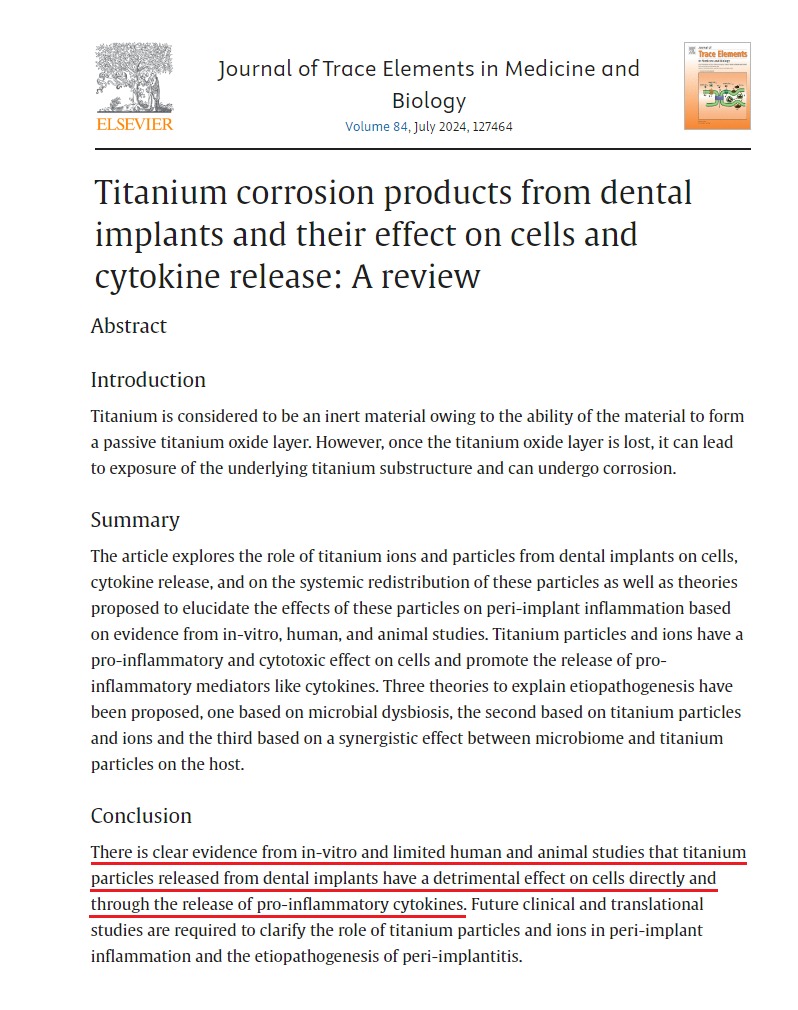Titanium corrosion products from dental implants and their effect on cells and cytokine release: A review
Link: https://www.sciencedirect.com/science/article/abs/pii/S0946672X24000841
Journal of Trace Elements in Medicine and Biology
Volume 84, July 2024, 127464
, ,
Article: /uploads/arquivos/Titanium-release%281%29.pdf
Abstract
Introduction
Titanium is considered to be an inert material owing to the ability of the material to form a passive titanium oxide layer. However, once the titanium oxide layer is lost, it can lead to exposure of the underlying titanium substructure and can undergo corrosion.
Summary
The article explores the role of titanium ions and particles from dental implants on cells, cytokine release, and on the systemic redistribution of these particles as well as theories proposed to elucidate the effects of these particles on peri-implant inflammation based on evidence from in-vitro, human, and animal studies. Titanium particles and ions have a pro-inflammatory and cytotoxic effect on cells and promote the release of pro-inflammatory mediators like cytokines. Three theories to explain etiopathogenesis have been proposed, one based on microbial dysbiosis, the second based on titanium particles and ions and the third based on a synergistic effect between microbiome and titanium particles on the host.
Conclusion
There is clear evidence from in-vitro and limited human and animal studies that titanium particles released from dental implants have a detrimental effect on cells directly and through the release of pro-inflammatory cytokines. Future clinical and translational studies are required to clarify the role of titanium particles and ions in peri-implant inflammation and the etiopathogenesis of peri-implantitis.

OBS: Na conclusão desse artigo podemos ver que há evidências claras de estudos in vitro de que as partículas de titânio liberadas de implantes dentários têm um efeito prejudicial nas células diretamente e através da liberação de citocinas pró-inflamatórias. Lembrem se que não é só titânio que é liberado pois existem ligas grau 5 e grau 23 que tem alumínio em sua composição e o alumínio é neurotóxico.
